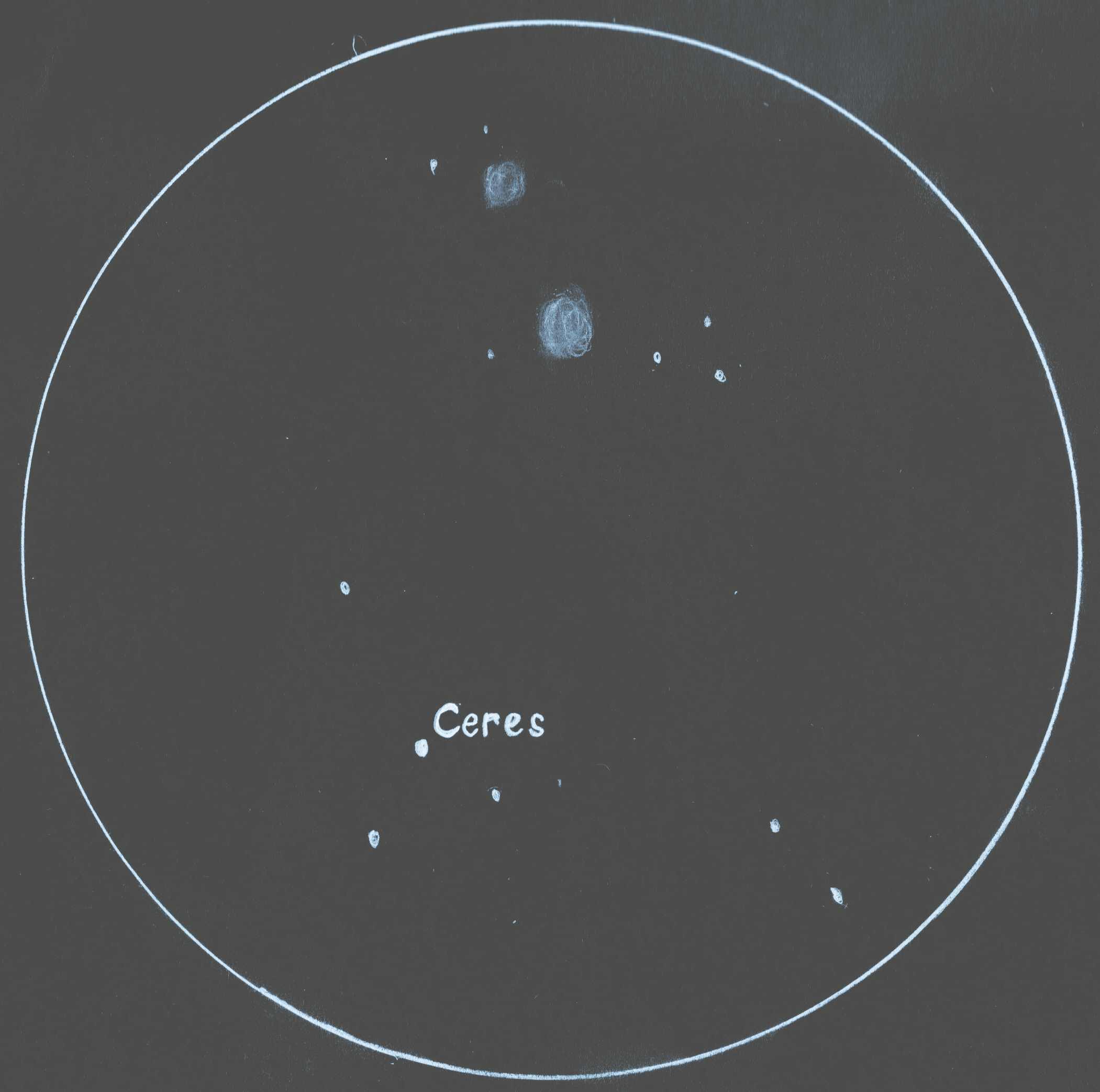Through the telescope, the little planet was unmistakable, as eastern Leo is very sparsely populated by stars, and Ceres outshone all of the stars in its vicinity. Of course, Ceres looked like a bright star itself, and we were surprised by its pinkish color. Since it is a fairly distant object in a relatively round orbit, we couldn't see any motion over a short time period. Still, it is always a thrill to pick out another object in the night sky. Two fairly bright galaxies, 3607 and 3608 in the NGC catalog, were visible just north of the dwarf planet in the same field, and numerous other dim galaxies could just barely be seen when the telescope was panned around the area.
Just exactly what to call Ceres has been debated in recent years. The object was discovered in 1801 and was considered an asteroid. In the recent fight over Pluto's status as a planet, Ceres was nearly upgraded to planetary status. The object has a diameter of around 600 miles and it is massive enough to form itself into a spherical shape. Unfortunately, the word play used to determine the labels of these objects has been absurd, and because Ceres has not managed to clear its orbit of debris - for its orbit is in the asteroid belt, which is a huge ring of debris - Ceres has been given the title of "dwarf planet." All such things are but human words, however, and Ceres will keep shining for us to see regardless of what we choose to call it. - GW
Copyright 2008 Starry Mirror



The
TM
Astronomy From West Virginia
DWARF PLANET CERES IN THE GALAXY FIELDS OF EASTERN LEO - DECEMBER 29, 2008
BRIDGEPORT, WV (S-M) - Anyone who is outside admiring Saturn and its rapidly disappearing rings early in 2009 should be aware of another interloper in eastern Leo. The large dwarf planet 1 Ceres is spending January and February near the tail of the lion, and at about magnitude 6.5, it is visible even in binoculars.
This morning of December 29, 2008 was a cold one. The weekend had been unseasonably warm, but we found temperatures below freezing waiting for us as we opened up the observatory and turned the slit to the south. When it is very cold, the dust cap on our telescope contracts and has to be pried off with a screwdriver, and by the time all was set up we wondered if we would find our target before dawn.
We began on the star Chertan, 70 Leonis, and moved north about three degrees along the lines of dim stars.

The view of Ceres in the galaxy fields of Leo, as seen through a 10" reflector at 5am ET, December 29, 2008. Galaxies 3607 and 3608 are near top.